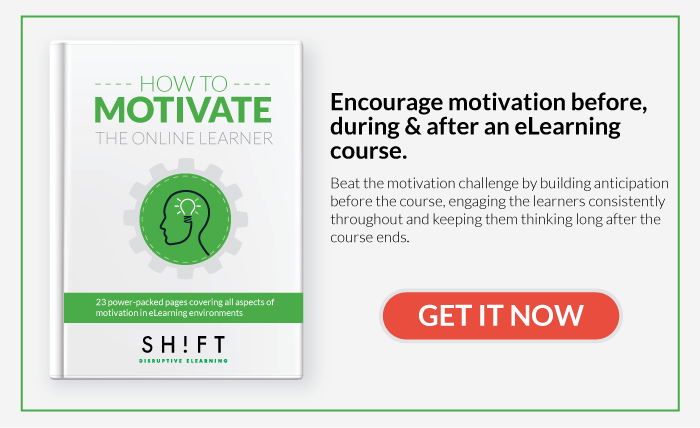Finding the right balance between artificial intelligence (AI) technology and human interaction has become crucial for success in the new era of corporate training.
As AI becomes a powerful tool in developing e-learning courses, it's important to discover effective ways to combine the efficiency and personalization offered by AI with human collaboration and communication.
In this blog post, we're going to share three ways to achieve this balance and maximize the impact of corporate training in today's environment.
According to a recent study, 78% of companies believe that AI has a significant impact on corporate training. However, despite its efficiency and ability to generate personalized content, 62% of employees consider human interaction crucial for meaningful learning. These statistics highlight the importance of finding the right balance between AI technology and human interaction in the realm of corporate training.
1) Amp up Interaction and Collaboration in the Learning Experience
In the context of corporate e-learning, AI can be a powerful tool for creating courses quickly and efficiently. It can analyze large amounts of data and generate relevant and personalized content for learners. However, it's essential to balance this efficiency with opportunities for human interaction.
Human interaction in e-learning courses is crucial for fostering active participation, engagement, and meaningful learning. While AI can provide content tailored to individual workers' needs, it's also important to offer opportunities for them to interact with each other and with experts.
For example, discussion forums are an effective way to promote collaboration and the exchange of ideas. Learners can ask questions, debate topics, and receive feedback from their peers and the instructor. This human interaction enriches the learning experience and allows learners to develop communication and collaboration skills.
Additionally, group projects and hands-on activities provide opportunities to apply acquired knowledge and work as a team. These activities foster critical thinking, problem-solving, and the development of practical skills, which are essential in the workplace.
The key is to find the right balance between AI and human interaction. By harnessing the power of AI to enhance learning efficiency and personalization while valuing the human touch in collaboration and communication, we can create more effective and enjoyable online learning experiences for our learners.
As leaders in corporate training, it's our responsibility to prioritize and encourage interaction and collaboration in e-learning courses.
Here's an actionable step you can take:
-
Design interactive activities: Include activities in your e-learning courses that promote interaction among learners. These can be discussion forums, group projects, or simulations. These activities allow learners to apply what they've learned, share ideas, and receive constructive feedback.
Recommended reading: 3 Ways to Leverage Artificial Intelligence for Rapid eLearning Course Creation
2) Embrace a Hybrid Model
Taking on the "human-AI sandwich" approach in corporate training is crucial.
This approach involves providing human input to AI, allowing AI to assist in content generation, followed by review, editing, and iteration by humans. This way, a harmonious integration of AI and human experience is achieved.
By applying the "human-AI sandwich" approach in creating e-learning courses, optimal results can be obtained by combining the capabilities of AI with the expertise and knowledge of human professionals.
AI can streamline the creation of e-learning courses and address many of the challenges companies face when creating up-to-date training. With AI, certain processes can be automated, resulting in reduced wait times and a lighter administrative burden for the training team, enabling them to focus on providing added value in areas where human interaction is crucial.
However, it's essential to remember that AI cannot completely replace human expertise in developing e-learning courses for companies. AI can be a powerful tool, but there are critical aspects where human knowledge and perspective are irreplaceable.
By adopting a hybrid approach, we can leverage the strengths of both AI and humans to the fullest. AI can analyze vast amounts of data, identify patterns, and generate relevant content, while human experts can contribute their judgment, experience, and creativity in reviewing and improving the content generated by AI.
Furthermore, by actively involving human experts in the process of creating e-learning courses, we ensure that the content is accurate, up-to-date, and tailored to learners' specific needs. Experts can provide real-life examples, case studies, and practical exercises that enrich the learning experience and connect it with the working world.
To implement this hybrid model, corporate training leaders should take the following actions:
-
Provide clear guidance to AI: Leaders must ensure that AI has access to accurate and detailed information about the course's objectives and requirements. This includes providing clear instructions on desired content, topics to cover, and expected learning outcomes.
-
Validate and review AI-generated content: Experts should take responsibility for reviewing and validating the content generated by AI. They must ensure it meets desired standards of quality and relevance. If necessary, experts should make modifications and adjustments to improve and adapt the content to learners' needs.
-
Establish a continuous feedback process: Leaders should foster a constant feedback loop between AI and the team. This involves establishing mechanisms to collect feedback and suggestions from experts regarding AI performance and generated content. Based on this feedback, continuous improvements and adjustments can be made in the hybrid model.
By implementing these actions, corporate training leaders can achieve effective collaboration between AI and human experts in creating e-learning courses. This will ensure that the strengths of both dimensions are maximized, resulting in high-quality, learner-centric training tailored to learners' needs.
Also, read: AI Tips to Transform Your eLearning Content Creation Process
3) Revalue and Train the Training Team for the New Era of AI
In today's landscape, where artificial intelligence (AI) has become a powerful ally in corporate training, it's essential to recognize the importance of empowering and training the team responsible for this task in the context of AI. This new era brings forth a series of changes and opportunities that require professionals in training to update their knowledge and skills.
By revaluing and training this team for the AI era, leaders will not only ensure they are prepared to make the most of the capabilities and benefits AI can offer but also lay the groundwork for an effective and successful transformation of corporate training as a whole.
To harness the full potential of AI, the following actions should be taken:
-
Train the team in AI: It's crucial to provide training team members with the skills and knowledge necessary to understand and use AI effectively. This involves offering training and development programs that familiarize them with relevant AI concepts and tools for their work.
-
Promote a culture of openness to change: Training leaders must foster a culture in which the team is open and willing to embrace new technologies and AI-based approaches. This can be achieved by creating an environment of continuous learning, where the latest trends and best practices in the field of AI are shared.
-
Stay updated continuously: AI is a rapidly evolving field, so it's essential for the training team to stay informed about the latest trends and tools. Leaders should provide professional development opportunities such as courses, conferences, and learning resources to ensure the team is up-to-date and able to make the most of AI capabilities.
Also read: Unleash the Power of Continuous Learning: Thrive in the Age of Automation and AI
In conclusion, finding a balance between AI technology and the human touch is essential for the success of eLearning course design in the new era.
By boosting interaction and collaboration in the learning experience, adopting a hybrid model that combines AI strengths with human expertise, and revaluing and training the training team in the context of AI, we can take significant steps toward achieving this balance. By implementing these strategies, organizations can maximize the potential of AI and deliver effective and enriching corporate training for their employees.



